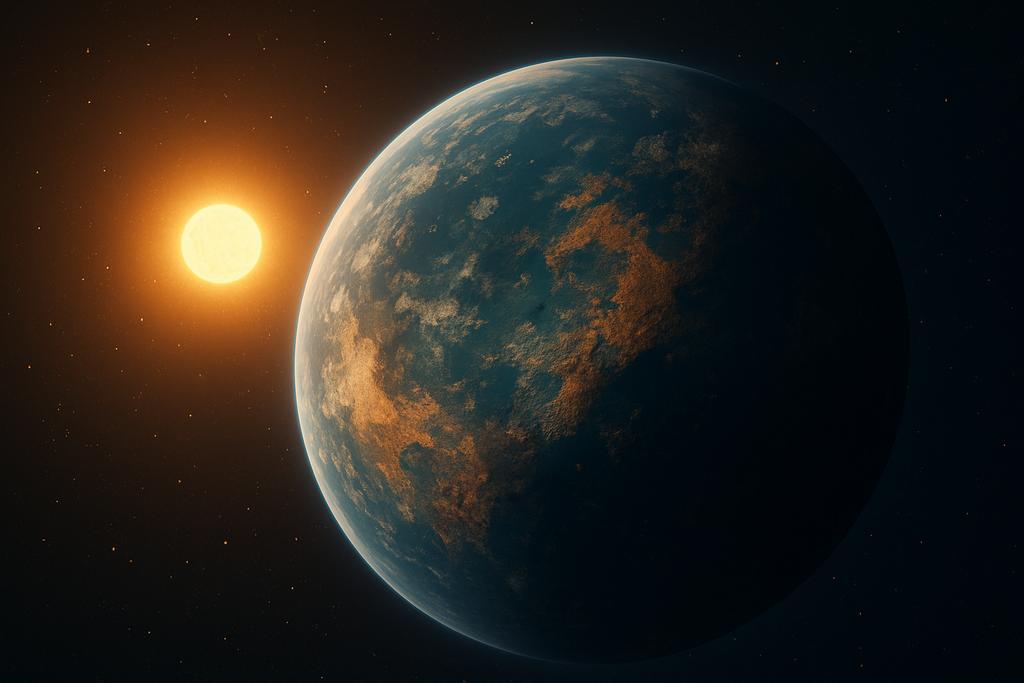Our Terms & Conditions | Our Privacy Policy
“Earth Is Not Unique Anymore”: Harvard Scientists Reveal Countless Earth-Like Planets Lurking in Distant Galaxies
| IN A NUTSHELL |
|
In recent years, the search for planets beyond our solar system has unveiled a fascinating landscape of celestial bodies, each offering unique insights into the cosmos. Among these discoveries are super-Earths, rocky planets larger than Earth but smaller than gas giants like Neptune. These findings have reshaped our understanding of planetary formation and the potential for life elsewhere in the universe. With advanced tools and innovative techniques, astronomers are painting a more comprehensive picture of the universe’s complex dynamics, challenging our preconceived notions of where life might exist.
Understanding the Abundance of Super-Earths
Astronomers have recently calculated that there is approximately 0.35 super-Earth for every star on wide orbits, akin to those of Jupiter or Saturn. This discovery is significant because it suggests that rocky planets are not isolated rarities but abundant members of solar systems across the universe. This revelation has profound implications for our understanding of planetary formation and the distribution of potentially habitable worlds.
The existence of numerous super-Earths indicates that the processes leading to their formation are common. These planets emerge from distinct pathways in the protoplanetary disks surrounding young stars. The materials available and specific conditions within these disks determine whether a rocky planet or a gas giant will form. This dual path of planetary formation highlights the diversity of worlds that populate the universe, offering numerous opportunities for the potential discovery of life beyond Earth.

“I’m Almost Certain There Are Inhabited Planets”: Shocking Space Insider Confession Sparks Frenzy Over Alien Life Possibilities
Implications for the Search for Life
The discovery of super-Earths on extensive orbits also holds promise for the search for extraterrestrial life. If these planets reside in extended habitable zones—regions where liquid water can exist—they may be promising candidates for environments conducive to life, particularly around hotter stars. This opens up new avenues for exploration, challenging the traditional focus on Earth-like planets in narrow habitable zones.
Our current understanding of where life might exist is still limited, primarily based on the conditions found on Earth, the only known inhabited planet. However, nature continually surprises us with its ingenuity, suggesting that life could thrive in a variety of unexpected environments. This broader perspective encourages scientists to expand their search criteria, considering a wide range of planetary conditions that might support life.
“They’re Coming From Space!”: Mysterious Radio Signals Repeating Every 2 Hours Identified in That Distant Star System
The Role of Advanced Technology in Planet Discovery
The groundbreaking discovery of super-Earths has been facilitated by the Korea Microlensing Telescope Network (KMTNet), a network of observatories located in Chile, South Africa, and Australia. By being dispersed across different time zones, these telescopes can continuously observe the southern hemisphere’s sky, providing uninterrupted data collection and analysis.
The technique employed, known as gravitational microlensing, is based on a principle from Einstein’s theory of relativity. According to this theory, a massive object can bend the light of a distant star, acting like a cosmic magnifying glass. If a planet accompanies this massive object, its presence is revealed through the distortion of light. This innovative method has proven instrumental in detecting planets that would otherwise remain hidden, offering an invaluable tool in the quest to map the universe’s planetary diversity.
“Star Devours Like a Monster”: Astronomers Stunned as Baby Star Consumes Gas Equal to Two Jupiters Annually
Revisiting Our Expectations About Life in the Universe
This new understanding of planetary abundance and diversity reminds us that our expectations of where life might exist are still evolving. Until now, our search for life has been heavily influenced by the characteristics of Earth, but the discovery of super-Earths prompts a reconsideration of potential habitats.
The sheer number of rocky planets and their varied environments highlight the universe’s complexity and the potential for life to exist in forms and places we have yet to imagine. As we continue to explore and learn, we must remain open to the possibilities that lie beyond our current knowledge. How might these discoveries reshape our search for extraterrestrial life, and what new questions will they inspire in the quest to understand our place in the cosmos?
Our author used artificial intelligence to enhance this article.
Did you like it? 4.4/5 (27)
Images are for reference only.Images and contents gathered automatic from google or 3rd party sources.All rights on the images and contents are with their legal original owners.



Comments are closed.